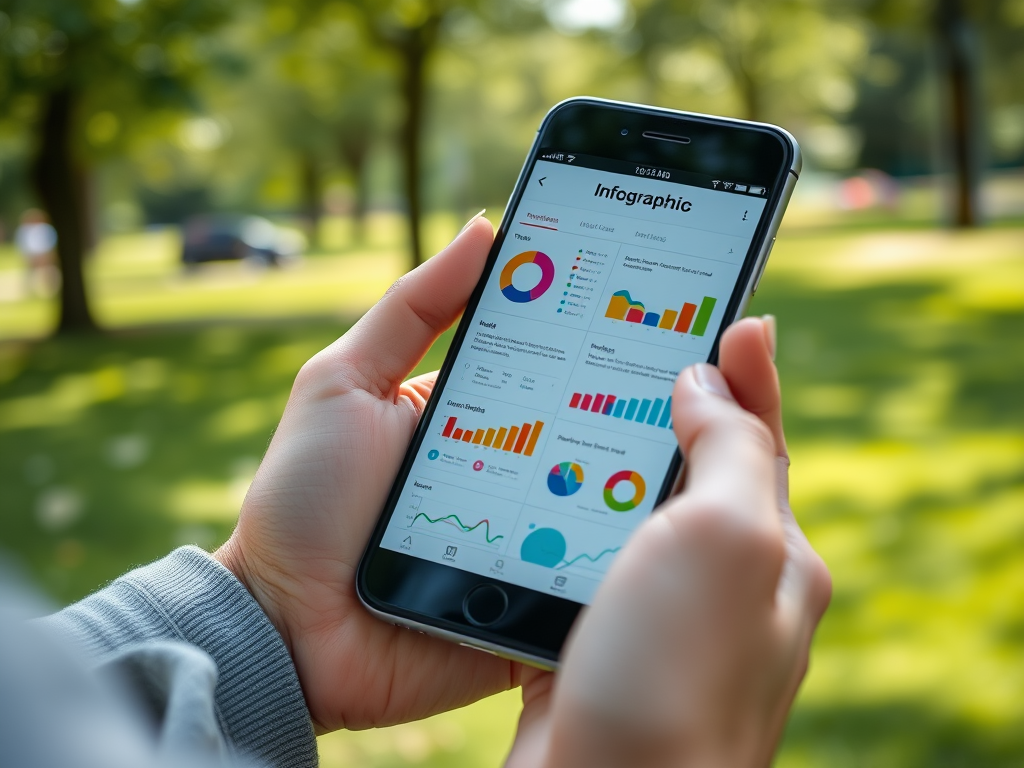In a world awash with information, the challenge lies not in the creation of data but in its effective communication. Infographics have emerged as a powerful tool for conveying complex information in a visually appealing manner. When designed thoughtfully, these graphical representations of data can capture attention, provoke thought, and become viral on social media platforms. Whether you’re a marketer, educator, or business owner, mastering the art of infographic creation can significantly enhance your message’s shareability. This guide will navigate you through the essential steps of creating stunning infographics that resonate with your audience.
Before diving into the nuts and bolts of design and data, it’s crucial to understand your audience. Why? Because the success of an infographic hinges on its ability to speak directly to the viewer’s interests, preferences, and needs. Understanding these elements can inform not just your content choices but also your visual style and dissemination strategies. With the right insights, you will not only create engaging content but will also foster shareability across various platforms.
Understanding Your Audience

To create shareable infographics, you must first develop a keen understanding of your target audience. Who are the people most likely to benefit from your information? What are their interests? For this purpose, consider conducting thorough research to identify their preferences. This can involve:
- Analyzing trending topics within your industry.
- Utilizing social media insights to gauge interests.
- Conducting surveys to get direct feedback.
Equipped with audience insights, you can tailor your infographics to engage users effectively. It’s also essential to adjust your content for the platforms where these infographics will be showcased. Each platform has distinct user demographics and preferences, requiring a nuanced approach in terms of tone, style, and content.
Research and Gather Data

Next, gathering credible data to support your message is paramount in infographic creation. Whether you’re focusing on statistics, surveys, or case studies, the integrity of your data influences your infographic’s credibility. When seeking information, ensure you’re using reliable sources; peer-reviewed studies or reputable news outlets should always be your go-to.
| Source Type | Description | Examples |
|---|---|---|
| Statistical Data | Numerical facts that convey measurable information. | Surveys, Reports |
| Qualitative Research | Descriptive insights that offer context and understanding. | Interviews, Focus Groups |
| Visual Elements | Graphs, charts, and images that support narrative. | Diagrams, Illustrations |
Once you’ve selected your data, focus on simplifying complex information to ensure clarity and accessibility. Use bullet points and concise sentences to guide viewers through the infographic seamlessly. An often overlooked yet impactful method is to underscore key takeaways so that viewers can easily recall and share the main insights.
Designing Your Infographic
The design layout significantly affects viewer engagement, so it should be meticulously crafted. Start by choosing a compelling color scheme that aligns with your brand while also being visually stimulating. Colors evoke emotions and can greatly enhance your message. Beyond color, the choice of imagery is equally important. Visual elements should complement and enhance your data representation, guiding the viewer’s eye towards the information you want to highlight, rather than distracting them.
- Choose a color palette that reflects your brand identity.
- Utilize engaging visuals like icons and illustrations.
- Maintain consistency with typography choices.
It’s advisable to select easy-to-read fonts, ensuring consistency throughout the infographic. Avoid cramming too much text into crowded sections, as this can deter engagement. Instead, aim for a balanced layout, combining visuals and text in a way that sustains the viewer’s attention while effectively conveying your message.
Crafting an Engaging Narrative
An infographic is not just a collection of visuals and data; it should tell a story to guide the audience through the information. Logical structuring is key — organize your content in a way that flows naturally from one point to the next, facilitating ease of understanding. Engaging narratives often include actionable insights, compelling users to share the content with their networks. A narrative with clear messages amplifies the potential for users to impart practical knowledge drawn from your infographic.
Promotion and Sharing
Finally, creating an outstanding infographic is merely the beginning. Promotion is vital for maximizing reach and engagement. One effective tactic is to leverage social media. Share your infographic across various platforms like Facebook, Twitter, and Instagram while customizing the messaging to match each platform’s user base. Here’s how you can effectively promote your infographic:
- Utilize visually captivating posts on social media.
- Engage with audiences through interactive elements.
- Encourage inbound links by offering embeddable codes.
By providing an embed code, users can easily share your infographic across their platforms, thereby amplifying your reach. Remember, offering a preview or teaser content can entice users to click through and engage with the full infographic.
Conclusion
Creating shareable infographics is a multi-faceted process that entails an understanding of your audience, thoughtful data gathering, design expertise, narrative crafting, and effective promotion. Each of these elements plays a critical role in ensuring that your infographic not only captures attention but encourages sharing. By taking a structured approach, you can enhance your infographic’s potential to engage viewers and extend its reach across various channels.
Frequently Asked Questions
- What tools can I use to design infographics? A variety of tools are available, including Canva, Piktochart, and Adobe Illustrator, which each offer unique features for infographic creation.
- How long should an infographic be? Infographics typically perform best when they are concise and visually appealing, usually no longer than 800-1000 pixels in height.
- What type of information works best for infographics? Statistics, comparisons, processes, trends, and step-by-step guides are excellent types of information for infographics because they lend themselves well to visual representation.
- Do infographics enhance SEO? Yes, infographics can boost SEO by driving traffic through shares and backlinks, especially when embedded on other sites with proper attribution.


